Seattle Mariners 2018 season review

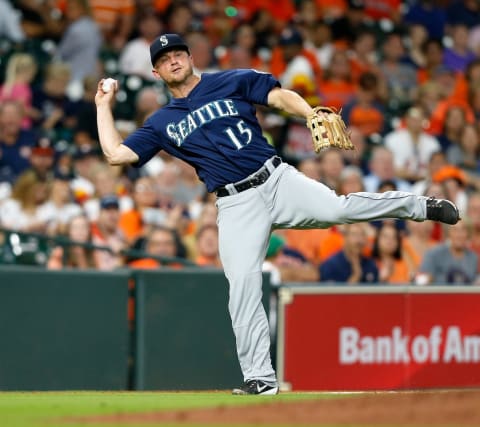
The Seattle Mariners got off to a terrific start in 2018 but then fell flat and missed the playoffs for the 17th year in a row.
Might as well get this out of the way. By rule, when writing a review of the Seattle Mariners season, it must be mentioned that they haven’t made the playoffs since 2001, back when Ichiro was in his rookie year in the major leagues. Another season was just added to the streak. Now that that’s out of the way, let’s talk about 2018.
Historically speaking, the Mariners just had one of the best seasons in their history. They were 89-73, which is the sixth-most wins in the 42 seasons they’ve been in existence. It was also their most wins in a season since 2003. Not only was it one of their best seasons ever, it was also about eight wins better than pre-season expectations. Back in March, the Mariners looked like a team that would straddle the .500 mark.
At the time, an American League team starting with a .500 projection could foresee a few things going right here or there and expect to be in the race for the second wild card spot. It looked like a win total in the mid-80s would be enough to be in the thick of things down the stretch. The Mariners were in the mix with the Blue Jays, Twins and Angels looking like their strongest competition for a seat at the postseason table.
The top of the league looked predictable. The Astros would win the AL West, the Indians would win the AL Central, and the Red Sox and Yankees would battle it out in the AL East, with the other taking the first wild card spot. That’s exactly what happened. The Astros won the West, the Indians won the Central, the Red Sox won the East and the Yankees were the first wild card.
What nobody knew was how good the Athletics and Rays would be. Both were generally expected to finish below .500. Instead, the Rays won 90 games and the A’s won 97, to take the second wild card. The Mariners, despite their 89 wins, finished eight games out of a playoff spot.
While their ultimate finish was both impressive and disappointing at the same time, the Mariners’ 2018 season was a wild ride. We’ll get to that shortly. First, let’s look at the moves they made last offseason.
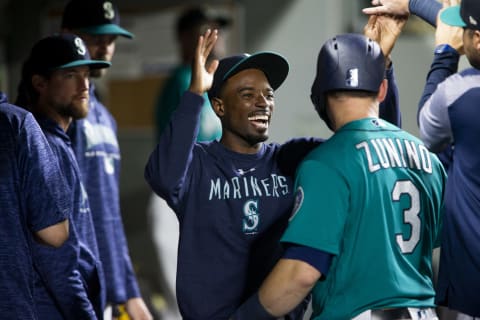
2018 Mariners: Offseason Moves
A couple weeks after the 2017 World Series ended, the Mariners traded pitcher Emilio Pagan and minor league infielder Alexander Campos to the Oakland A’s for first baseman Ryon Healy. They had earlier lost first baseman Yonder Alonso to free agency. Healy was brought on board to provide some pop after hitting 25 home runs the previous year (more on him later).
In December, the Mariners traded three minor leaguers to the Marlins for Dee Gordon. The Marlins were in fire sale mode and the Mariners tabbed Gordon as a guy they’d like to have even though they already had a prominent player named Robinson Cano at Gordon’s natural position, second base. Gordon would be moved to center field (more on him later).
The Mariners also received international bonus slot money in the Gordon trade, just as they had earlier when they traded pitcher Thyago Vieira to the White Sox in November. The purpose for this international bonus slot money was to sign their number one offseason target: Shohei Ohtani.
In the Ohtani sweepstakes, the Mariners looked like top contenders. General Manager Jerry Dipoto made no secret of his desire to sign Ohtani and the Mariners went all-out to get him. Many fans thought he was practically a sure thing. They could picture him in the Mariners uniform, pitching every five days and DH-ing on his days off.
Unfortunately for Seattle fans, Ohtani signed with the Los Angeles Angels. It was a crushing blow that put a big damper on the offseason. The Mariners signed other players, including pitcher Juan Nicasio, infielder Gordon Beckham and outfielder Kirk Nieuwenhuis. They even brought back the great Ichiro Suzuki as a free agent in March, but nothing made up for missing out on Ohtani and seeing him sign with a team in the same division.
The late-March signing of pitcher Wade LeBlanc would prove to be a nice pick-up, but the big offseason deals consisted of acquiring Ryon Healy and Dee Gordon, both of whom will feature prominently in the “What Went Wrong” section of this article. Before we get to the good and bad, let’s take a look at the craziness of the Mariners’ 2018 season.
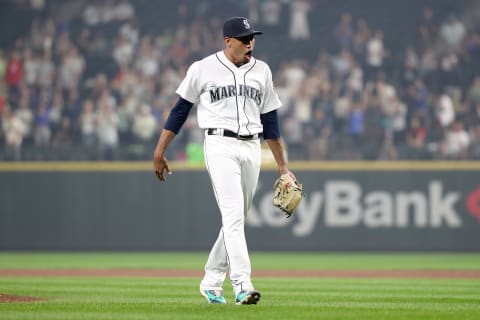
2018 Mariners: One-Run Magic
After coming into the season looking like a .500-ish team, the Mariners exceeded all expectations in the first half. They were 16-11 in March/April, 18-11 in May and 19-9 in June. They had a terrific stretch from May 18 through July 3 when they won 31 of 43 games. That’s a .721 winning percentage over a little more than one-quarter of the season.
On July 5, after their ninth win in their last 10 games, the Mariners were 56-32 and just 1.5 games out of first place in the AL West. They were only a half-game behind the Yankees for the first wild card spot and 6.5 games ahead of the A’s for the second wild card spot. Mariner fans were loving every minute of this incredible season.
As good as the season was going, there were some warning signs. The Mariners had a +25 run-differential, which didn’t align with their 56-32 record. With 385 runs scored and 360 runs allowed, the Mariners had played more like a 47-41 team than a 56-32 team. Run-differential is generally better at evaluating the caliber of a team than the team’s actual win-loss record.
A big part of the nine-game gap between the Mariners’ actual record and expected record was their success in one-run games. They were 26-11 in such games through July 5. If the one-run games magic disappeared, the Mariners would come crashing back down to earth. No amount of clubhouse chemistry or Sodo Mojo would prevent it.
After July 5, the Mariners went 33-41 to finish third in the AL West, 14 games behind the Astros and eight games behind the A’s for the second wild card spot. After going 26-11 in one-run games through July 5, they went 10-10 over the last few months of the season. While their actual record was 89-73, their expected record, based on their run-differential, was 77-85.
Despite the disappointing second half, there were some good things that happened with the Mariners this year. Let’s take a look.
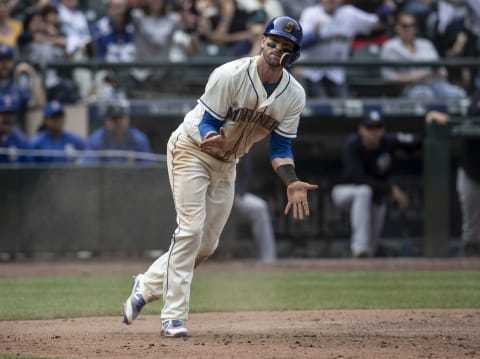
2018 Mariners: What Went Right
The top two position players on the Mariners this year were right fielder Mitch Haniger (4.6 WAR) and shortstop Jean Segura (3.8 WAR). Two years ago, Haniger and Segura were acquired in a trade with the Arizona Diamondbacks for pitcher Taijuan Walker and infielder Ketel Marte. This is one of the better deals Dipoto has made as Mariners GM.
In his two years in Seattle, Haniger has been worth 7.1 WAR and Segura has been worth 6.8. That’s a combined 13.9 WAR at a cost of roughly $17 million. The Diamondbacks duo, Walker (2.7 WAR) and Marte (3.2 WAR) have been worth 5.9 WAR at a cost of around $8.5 million.
Along with Haniger and Segura, veteran slugger Nelson Cruz turned in another good season. He led the team with 37 homers and 97 RBI. This was the last year of the four-year deal Cruz signed as a free agent before the 2015 season. The team will have to decide whether to bring him back as a free agent. As good as he’s been overall, his numbers have slipped each season in Seattle, from 5.0 WAR to 4.3 to 3.9 to 2.5. He’ll be 38 years old in 2019.
The Mariners top starting pitcher was James Paxton, who tossed a career high 160.3 innings with a 3.76 ERA and 3.24 FIP. His 32.3 percent strikeout rate was fourth-best in baseball for starting pitchers with 160 or more innings. Only Justin Verlander, Max Scherzer and Gerrit Cole struck out batters at a higher rate. Paxton has been an effective pitcher for most of his career, but this was the first time he pitched more than 140 innings in a season.
The second-best starting pitcher on the team, Marco Gonzales, was a surprise. He was a top-100 prospect a few years ago but injuries limited him before this year. The Mariners acquired him in July of 2017 for outfielder Tyler O’Neill. This season, he had a 4.00 ERA and 3.43 FIP in 166.7 innings. He significantly improved his walk rate and the number of home runs he allowed.
On Thursday, he was rewarded with a two-year, $1.9 million contract. It was an unusual move because he is not arbitration eligible until after the 2020 season. As reported by Jon Heyman, the deal came about because Gonzales had a grievance pending because of the timing of a demotion while with the St. Louis Cardinals. Gonzales agreed to drop the grievance to get more money now.
So Marco Gonzales, to clarify, agreed to drop his grievance and the potential for more service time in exchange for a bigger deal now, one that guarantees a 2nd year and is about 700-800K more than a 0-2 player would normally get over 2 years #mariners
— Jon Heyman (@JonHeyman) November 2, 2018
Two other starters were roughly league average. Mike Leake (4.36 ERA, 4.14 FIP in 185.7 innings, 2.3 WAR) and Wade LeBlanc (3.72 ERA, 4.28 FIP in 162 innings, 1.7 WAR) are fine guys to fill out the rotation. They don’t strike out many batters, but do enough other things well to be useful.
Coming out of the bullpen, closer Edwin Diaz had the best season by a relief pitcher in Mariners history. He obliterated the team record for saves in a single season, with 57. The previous record was 48 by the Fernando Rodney Experience in 2014. Diaz’ 57 saves tied Bobby Thigpen in 1990 for the second-most in MLB history. Only Francisco Rodriguez, with 62 in 2008, had more.
Then there’s Robinson Cano. His performance on the field belongs in the “What Went Right” column, but his 80-game suspension for PED use belongs in the “What Went Wrong” column. In the 80 games he played, he hit .303/.374/.471 (136 wRC+, second on the team) and was worth 2.9 WAR.
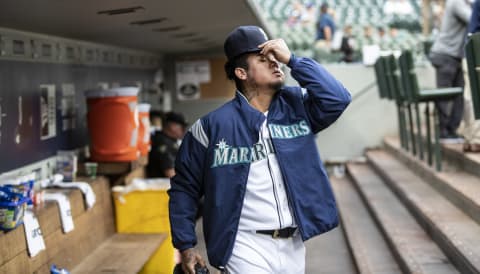
2018 Mariners: What Went Wrong
Neither of the two big trades the Mariners made in the preseason worked out this year. Ryon Healy hit 23 home runs, but they came with an ugly .277 on-base percentage. He finished with a 90 wRC+, which meant he was 10 percent below average on offense after league and ballpark effects were accounted for.
Along with his below average hitting and poor base running, Healy is one of the worst defensive first basemen in baseball (according to Fangraphs). He finished the year with -0.8 WAR. That’s below replacement-level. Thanks mainly to Healy, Mariners first basemen finished 27th of the 30 MLB teams in Fangraphs WAR.
The other new edition was Dee Gordon. He started the season hot. In his first 30 games, he hit .355/.380/.452. A big part of it was a .417 Batting Average on Balls In Play (BABIP). His career rate is .338. Then came the big fade. In his last 111 games, Gordon hit .243/.262/.319, with a BABIP of .273.
Gordon wasn’t as good as he looked when the balls were dropping in and wasn’t as bad as he looked when the balls weren’t dropping. It wasn’t all about BABIP, though. He also had the lowest walk rate of his career, with just nine free passes in 588 plate appearances. No qualifying hitter walked less often than Dee Gordon in 2018.
Because of the Cano suspension, Gordon ended up playing more games at second base than center field, where he was originally expected to spend the whole season. That meant more time in center for Guillermo Heredia, who was barely above replacement level. With Gordon and Heredia getting the bulk of the playing time in center field, the Mariners finished 28th of 30 teams in WAR at that position. Only the White Sox and Marlins were worse.
After six years of being an above-average player who averaged 4.3 WAR per season from 2012 to 2017, Kyle Seager had the worst full season of his career. He was still good with the glove at third base, but well below average at the plate, hitting .221/.273/.400 (84 wRC+).
The left-handed hitting Seager saw teams shift against him more than ever in 2018. His percentage of plate appearances against the shift has increased each of the last four seasons from 36 percent in 2015 to 47 percent to 55 percent to 71 percent this year and he’s been particularly bad hitting against the shift the last two seasons. It’s likely no coincidence that he’s had his two lowest BABIPs the last two years. He also had the lowest walk rate of his career. It all added up to an ugly season with the bat.
Catcher Mike Zunino’s season was similar to Seager’s. He was good behind the plate, but struggled at the dish (.201/.259/.410, 84 wRC+). Zunino has been below average on offense in four of his six major league seasons. In 2016 and 2017, it looked like he had made real progress in plate discipline with walk rates of 11 percent and 9 percent. This year, his walk rate dropped back to 5.9 percent and his on-base percentage took a nosedive.
One of the saddest developments in Seattle over the last few years has been the demise of the pitcher known as “King” Felix Hernandez. The King was the best pitcher in baseball from 2006 to 2015, according to Fangraphs WAR, but has been below average on the hill in each of the last three years. The 2018 season was his worst yet, as he had a 5.55 ERA and 5.18 FIP in 155.7 innings.
Another struggling starter was Erasmo Ramirez, who had a 6.50 ERA and 6.69 FIP in 45.7 innings. He allowed 14 home runs in just 10 starts. Ramirez made two appearances in April before hitting the DL for three months. He had some good starts in August and September, but closed out the season by allowing 10 earned runs in his last two starts.

2018 Mariners: Outlook for 2019
Roster Resources has the Mariners with the second-highest estimated payroll in the American League, behind only the World Champion Boston Red Sox. Of course, this is before the offseason gets going. The Yankees could make a big splash on Manny Machado or Bryce Harper and jump past the Mariners. The Angels could open up their wallets and surpass the M’s in payroll also.
The team’s current roster has seven players making $9 million or more, from reliever Juan Nicasio at $9 million to the $27 million owed to Felix Hernandez. The other high-salaried players are Robinson Cano ($24 million), Kyle Seager ($19 million), Mike Leake ($16 million), Jean Segura ($14.25 million) and Dee Gordon ($13 million). In addition, James Paxton is projected to have his salary increase to $9 million through arbitration.
No matter how you look at it, the team will have a high payroll. If you believe they’re an 89-win team on the cusp of contention, perhaps the high payroll isn’t a big deal. If they’re more like a 77-win team, as their run-differential this season suggests, then this is a vastly overpaid roster. As things are now, the lineup, rotation and bullpen look like this:
Live Feed class=inline-text id=inline-text-5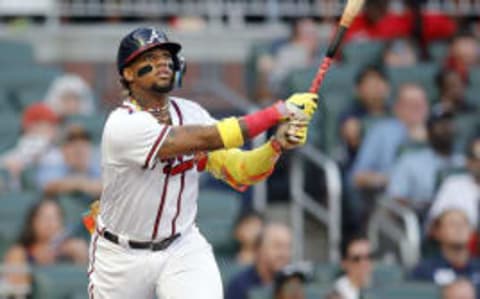
House That Hank Built
C—Mike Zunino
1B—Ryon Healy
2B—Robinson Cano
SS—Jean Segura
3B—Kyle Seager
LF—Ben Gamel
CF—Dee Gordon
RF—Mitch Haniger
DH—Daniel Vogelbach
SP—James Paxton
SP—Mike Leake
SP—Marco Gonzales
SP—Felix Hernandez
SP—Wade LeBlanc
CL—Edwin Diaz
RP—Alex Colome
RP—James Pazos
RP—Juan Nicasio
RP—Nick Vincent
With the offseason upon us, the Mariners are in a difficult position. They’re loaded with veterans, have a high payroll and are, realistically, about a .500 team. They’ve been desperately trying to end that long playoff drought, but haven’t been able to get over the hump. Do they continue to push for a playoff spot by adding major league talent to the current roster or take a step back so they can re-load and try to compete down the road?
Adding major league talent is more likely to come through free agency than trades because the Mariners simply don’t have much in their farm system to trade. They were ranked dead last among the 30 MLB teams by Bleacher Report in September. Only two players received Tier 2 rankings, which means they project to be regulars in the big leagues. Both are young outfielders—Kyle Lewis (played in High-A and Double-A in 2018) and Julio Rodriguez (rookie ball in 2018).
Two others, pitcher Logan Gilbert and first baseman Evan White, could be regulars down the road, but the rest of the team’s top ten are projected to be fringe players. There just isn’t much here to trade away to get any sort of impact player. In addition, the Mariners went very college-heavy in last June’s draft, which will produce potential major league players sooner rather than later, but those players don’t have as much upside as high school players.
The two least productive spots last year were first base and center field. Where Robinson Cano plays next year will impact those spots. If Cano remains at second base, Dee Gordon will be back in center, or perhaps shifted to left field if the team finds another center fielder. If Cano is moved to first base, Gordon takes over at second base, and center field becomes the main spot to upgrade.
Of course, moving Cano to first base would push Ryon Healy to DH, perhaps in a platoon with Dan Vogelbach, who deserves a legit shot at big league playing time at some point. None of this happens if Nelson Cruz is re-signed to be the full-time DH. The current roster has some moving parts that will have to be arranged to provide the most production.
Another option to upgrade the roster would be trading closer Edwin Diaz, who will likely never be more valuable than he is right now. He’s coming off a terrific season and is still inexpensive. He would bring back legit talent from a contender looking for a lock-down closer. If Diaz is dealt, the Mariners could move Alex Colome to closer. He’s never had a season like Diaz just had, but he has closer experience.
Next. Mariners 2018 minors awards. dark
The Mariners are at a point right now where they could get bounce back seasons from a few guys (Gordon, Seager, Zunino), continued good production from others (Haniger, Cano, Segura) and enough pitching to compete for the second wild card. Or they could see it all blow up and win 75-ish games with a $150 million payroll. It will be interesting to see what Jerry Dipoto comes up with this winter.